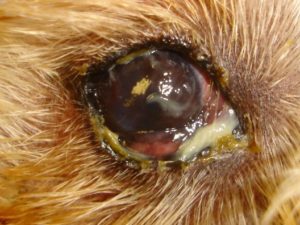Introduction
Do female dogs get periods? The answer is yes, but it is not the same as what a human woman experiences. Some people, who buy or adopt female dogs never consider this issue and then have ruined carpets and furniture, unexpected litters and what is the worst – their female dog may run away during the ‘period’.
In this article we are going to provide female dog owners with all necessary information on female dog periods.
What is the ‘Period’?
Period (or estrus cycle, ‘being in heat’, ‘in season’) is the stage of reproductive cycle when a female dog is capable for becoming pregnant. On the average, dogs reach their first estrus cycle at 6-8 months, but this point depends on the breed.
How often Does a Female Dog Have Periods?
Female dog tends to have periods twice a year, approximately every 6 months. Small dog breeds may have estrus cycle 2-3 times a year; large and gigantic dog breeds may have the periods just once a year.
How Long Does the Period Take?
Usually, the estrus cycle takes 2-3 weeks, however, it may vary in different dog breeds. The first sign of a ‘period’ is swollen vulva, and then come vaginal discharges. When the estrus cycle goes toward the end, vulva gets its normal size and discharges stop.
During the period, the color and appearance of vaginal discharge can vary. At the start of the cycle, vaginal discharges may be bloody, and towards the 10th day they may change to pink and watery consistence. This is a high time for ovulation and mating, however, it doesn’t mean that your dog can’t get pregnant earlier within the cycle, since the sperm of a male dog can survive within the vaginal tract for up to a week. If the pregnancy occurs, it will take up to 9 weeks.
Possible Complications
If you are not going to spay your female dog for some reason, be ready for the following complications that may occur while your pet is ‘in heat’:
-
- Pregnancy. Puppy litter is a great responsibility; moreover, it would take much time and financial resources. Were it not for your litter, a homeless animal could have found its forever family.
- False pregnancy. The dog that doesn’t have any mating during the ‘period’ starts to show signs of pregnancy, such as nesting behavior, mothering behavior and milk production. Remember, that false pregnancy is a great psychological stress for your dog.
What to Do?
- avoid off-leash walks;
- do not leave your dog alone at home;
- do not train your dog and avoid any physical activity;
- use doggie pants to keep your carpets and furniture clean;
- add menthol to the end of her tail in order not to attract male dogs.
It is up to you to decide on spaying. Just keep in mind, that spayed dogs have less stress and live longer and healthier lives.








